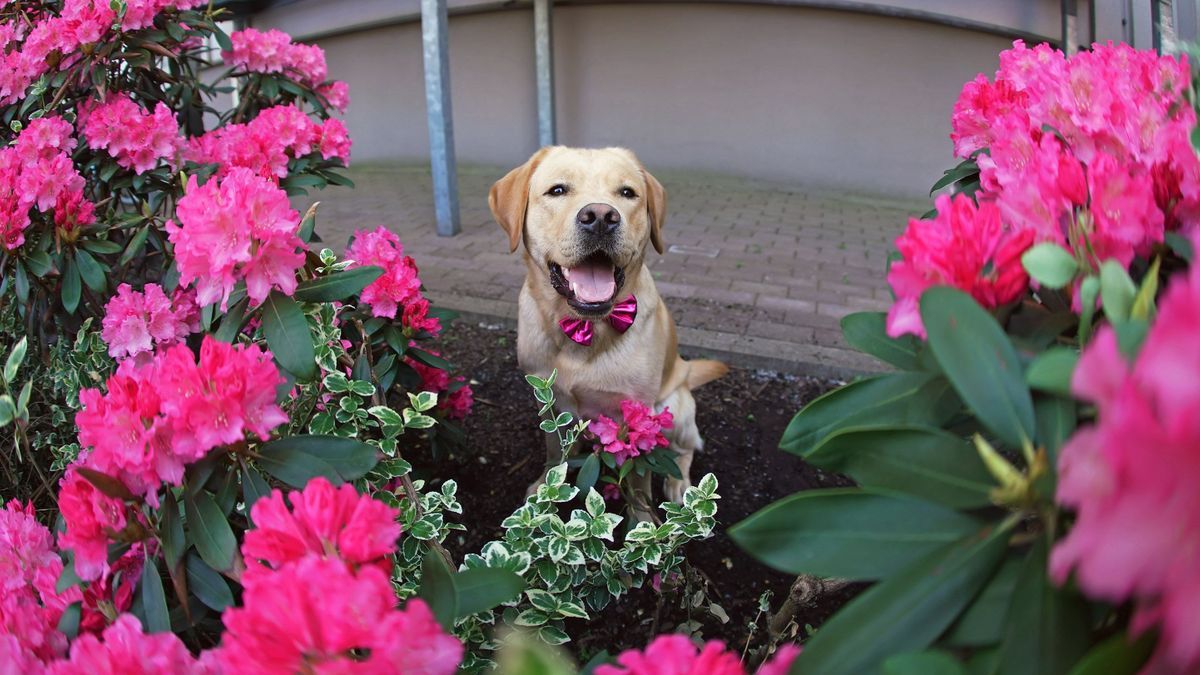
Spring is a crucial time for plant lovers. It's time to prepare your garden or planters for the sunny days to come. But you have to be careful about the plants that are there if you share your life with a cat or a dog. Some plants prove dangerous for these adorable furballs. Here are five.
L’amaryllis
It is undoubtedly one of the prettiest houseplants. The amaryllis arouses admiration in those who look at it, thanks to its generous flowers in shimmering colors. However, it has less panache in spring, a season during which its foliage will turn yellow. It regains its splendor in winter, which explains why this plant is often offered during the end-of-year holidays.
But for our mustachioed companions, amaryllis is no gift. For good reason, it contains lycorine. This substance is harmful to animals because it has an irritating effect on the gastric mucous membranes. It can cause vomiting, diarrhea, abdominal pain and sometimes seizures in furballs that ingest amaryllis tips.
Owners should be particularly careful that their pet does not ingest amaryllis bulbs as they are more toxic than the leaves and flowers of this plant. If they notice symptoms of poisoning, they should consult a veterinarian without further delay.
Oleander
Few shrubs evoke the South as much as oleander. If this plant is typical of Mediterranean regions, it can grow in any region of Europe. Gardeners love oleander for its flowers, which can be white, pink, red, yellow, orange, purple or even two-tone.
However, they are often unaware that this shrub contains substances that are extremely toxic to dogs and cats. These are cardiotonic glycosides, compounds that slow down, strengthen and regulate the heartbeat. They can cause death from cardiac arrest, even if the animal only ingests a few oleander leaves.
When they are fresh, oleander leaves have a bitter taste that disgusts our little companions. But they are much more appetizing to them when they are dry. If ingested, the animal exhibits repeated nausea and vomiting. Abdominal pain and diarrhea may also occur, as may hypersalivation. When the first symptoms appear, it is essential to consult a veterinarian to prevent them from getting worse.
The lily
You only need to take a little interest in French history to realize that the lily is the king of flowers. It owes its strong symbolism to its flowers with imposing petals, which can be white, red, purple, yellow, or sometimes two-tone. Most varieties are fragrant, making it a perfect plant for bouquets and flower arrangements.
Cats are often attracted to the captivating scent of lilies, but their owners must ensure that they do not get too close. Indeed, this plant contains chemicals that can cause serious kidney damage. Ingesting very small amounts of any part of the lily (petals, leaves, pollen, or even the water from the vase) can lead to acute kidney failure in tomcats.
The symptoms of poisoning are numerous: vomiting, diarrhea, dehydration, loss of appetite, lethargy, excessive salivation, etc. They must be treated as quickly as possible to prevent them from getting worse, which could lead to the death of the cat.
Dogs are less sensitive to the chemical substances contained in the lily, but it is still advisable to be careful that they do not play with the bulbs of this plant.
Le rhododendron
That's a funny name. The term rhododendron comes from ancient Greek, and literally means “rose tree”. Nothing surprising when you know that this shrub is distinguished by its flowers of different shapes, sizes and colors. Its evergreen foliage is quite thick and easily resists the vagaries of the weather, which explains why rhododendrons are found in many gardens.
But pet owners should be wary of this harmless-looking shrub. It contains grayanotoxins, chemicals that affect sodium channels in nerve and muscle cells, disrupting the normal transmission of nerve signals. Ingesting these toxins can lead to a host of symptoms, including vomiting, diarrhea, and excessive salivation. In the most worrying cases, the animal may present cardiac and respiratory problems, or even convulsions.
The severity of symptoms may vary depending on the amount of rhododendron ingested and the sensitivity of the animal. However, rapid veterinary intervention is often necessary to prevent serious complications.
The tulip
The tulip comes in a multitude of varieties and colors, for all tastes. With its cup-shaped petals, it is often appreciated by gardeners. But that's nothing compared to the Dutch: every year, they dedicate a national day to it in January.
Despite its harmless appearance, this flower is nonetheless harmful to dogs and cats. The fault is tulipalines A and B, toxic compounds which are mainly found in the bulb of tulips. Pets that have ingested it will experience digestive problems such as nausea, vomiting, diarrhea or even abdominal pain. They may also experience tremors and mood disturbances.
Fortunately, ingesting tulip bulbs is not lethal to animals. However, they must be taken to the veterinarian quickly to receive appropriate treatment.
